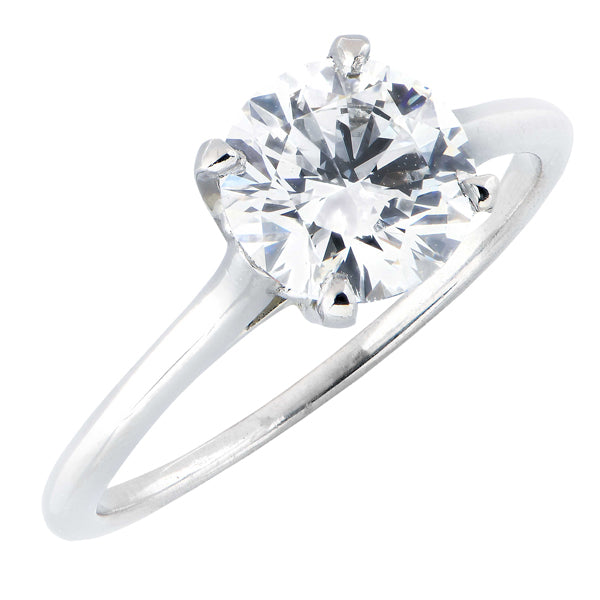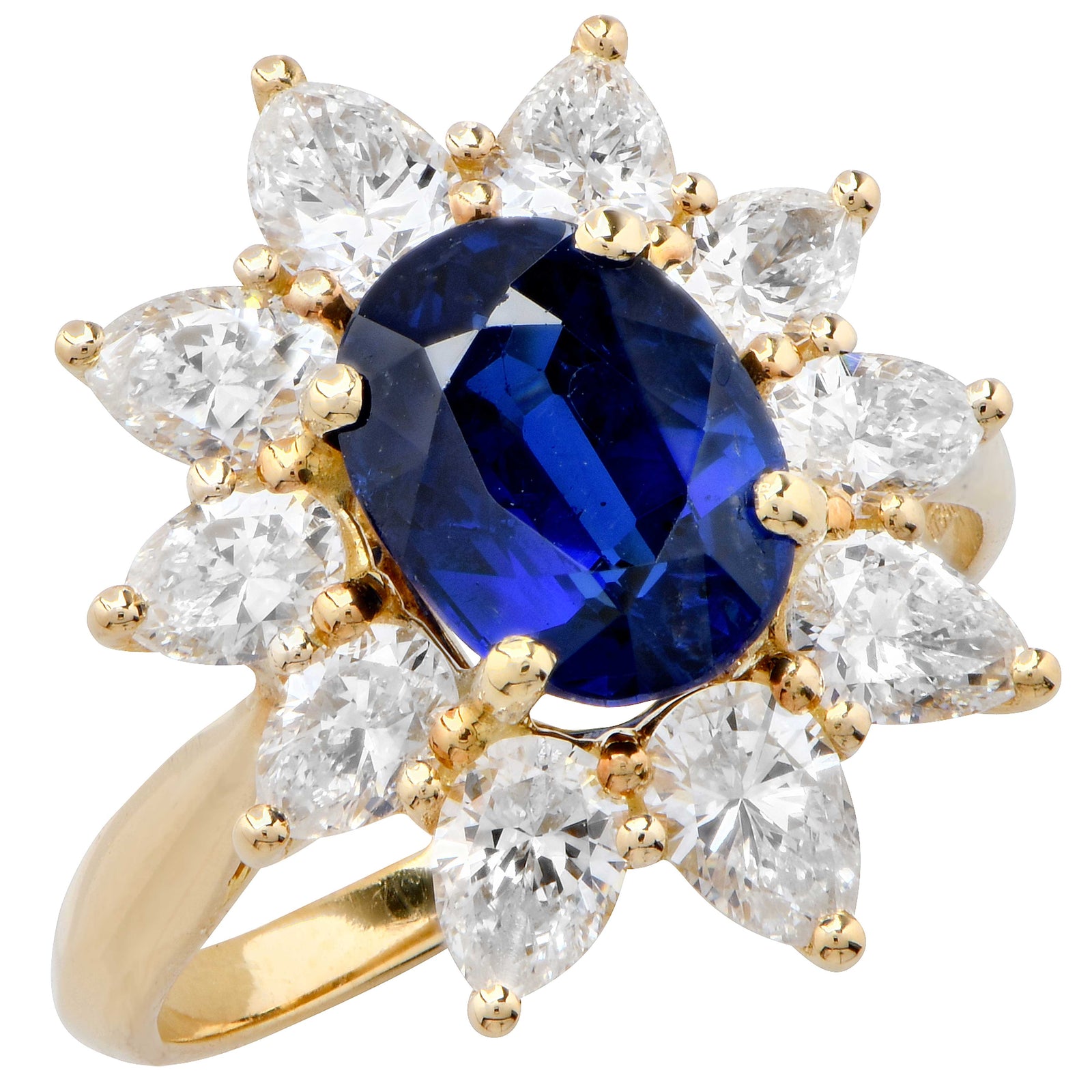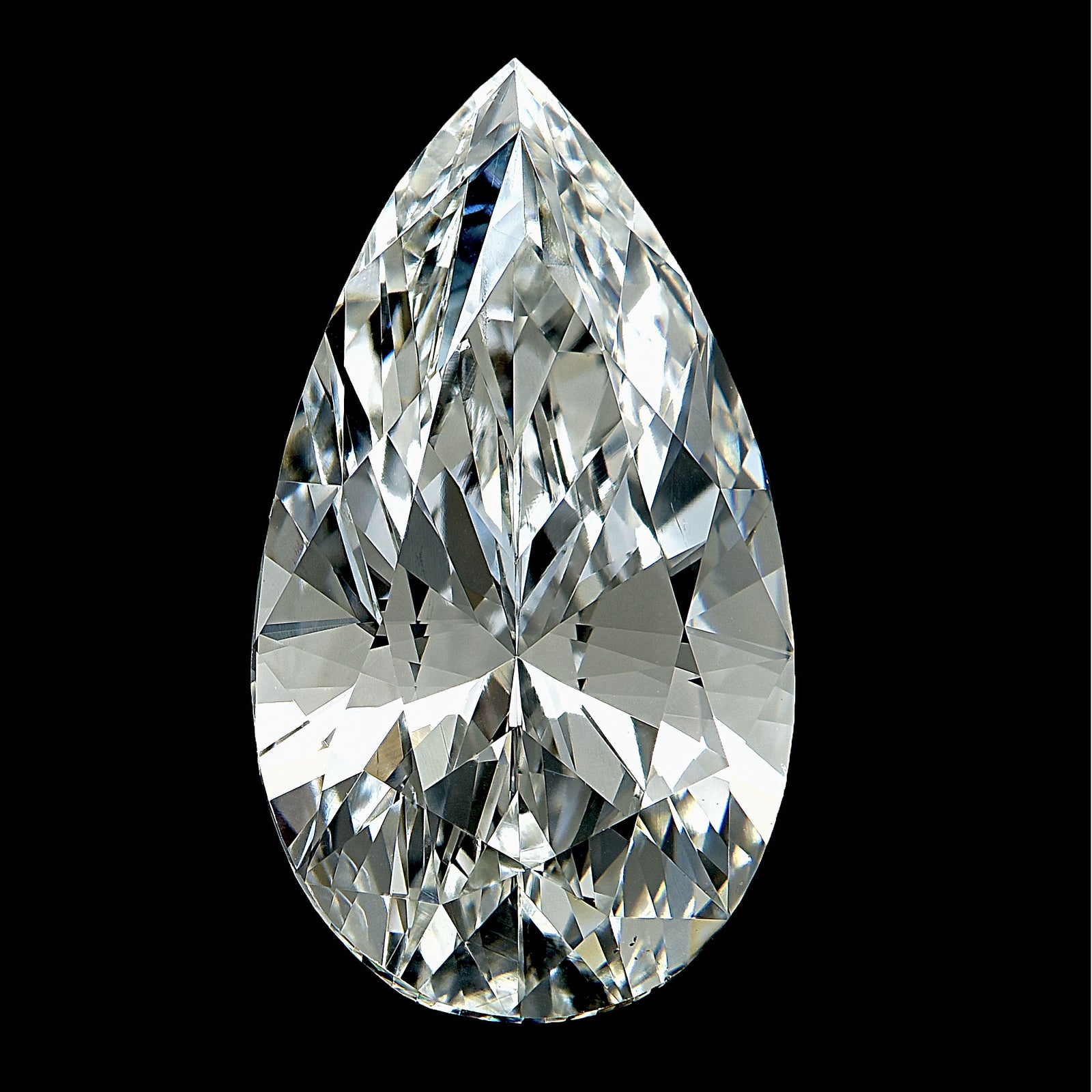There are other factors besides the Four C’s that affect the look and value of the diamond in your engagement ring. One of the most talked about of these is fluorescence. Fluorescence is a term used to describe the glow a diamond exhibits when exposed to ultraviolet light. We are concerned with this because sunlight and other sources of light contain ultraviolet light. That is to say that when you walk out into the sun the light coming from the sun contains many frequencies of light, some visible some invisible. Sunlight contains infrared, visible (visible light has many colors not just white) and ultraviolet.
Ultraviolet light is broken down into wavelength ranges. As gemologists we use two such ranges, long wave and short wave. Long wave is generally harmless and is the kind of lights you see used in clubs or fairs to make things glow. This is the light that also makes some diamonds glow. The GIA states that about 35% of all diamonds have some level of fluorescence. Fluorescence is described in diamonds as being none, faint, medium, strong, and very strong. The strength and color of fluorescence in your diamond engagement ring affects its value.
Until a couple of decades ago, fluorescence was seen as a positive as it was thought that it always improved the color of a diamond in sunlight. Since diamonds were supposed to be examined under southern originating sunlight it came to reason that fluorescent diamonds would show better and therefore trade at a higher price. In a few diamonds however, fluorescence was known to cause a milky or oily appearance which took away from the splendor and scintillation of a diamond. Since these diamonds were noticeably different when exposed to sunlight, the value of these dropped and they became less popular with the public.
Recently, the conversation has gone beyond the diamonds which are obviously affected by fluorescence and has began to be more about the effects of fluorescence on color grading and how specifically the GIA allows fluorescence to be present in their diamond grading lights and thus becoming a factor in color grading. The trend of thought goes like this. When the GIA began to sell lights used to grade diamonds they sold the same type of light which was used in their lab. The light did not contain any ultraviolet light and was said to be the best light to grade diamonds. The color grades which were determined by using this light were true unless you exposed the diamond to sunlight. Then the ultraviolet component of sunlight would make diamonds with medium to very strong fluorescence look whiter. Therefore, fluorescence was thought of as a good thing. As you could buy a diamond which was graded H in color and if it had medium to strong fluorescence, it may show up as an F or a G in color under sunlight. Since then the GIA began to use color grading lights which contain ultraviolet components in them. These days if your diamond has a color grade of H and it has medium to strong fluorescence it will not improve its look under sunlight. Moreover, inside, away from sunlight, using a light which does not have an ultraviolet component, the diamond may look like an I or a J. This is a bad thing.
The fluorescent component of a light may be something you never thought about, but if you own a diamond with fluorescence graded and medium to very strong, you may want to explore this. Currently, diamonds which have a fluorescent component of strong or very strong are heavily penalized by the industry as their prices are greatly reduced. If you own such a diamond and want to sell it, you will be offered a price which reflects 60% discount of the wholesale list compared to a diamond without fluorescence and comparable cut, color and clarity, which will be at 20% to 30% discount. Very strong fluorescence is so disliked by the industry that you can purchase a diamond with very strong yellow fluorescence at the same price you would buy a treated diamond.
The color of fluorescence is also an important part of the valuation of a fluorescent diamond. Yellow or orange fluorescence, although rare, can impact dramatically the look and value of a diamond. Yellow fluorescence will make a diamond look yellower under sunlight and therefore degrading its value.
On my next article I will talk about other phenomena in diamonds and how they are used to determine origin.












